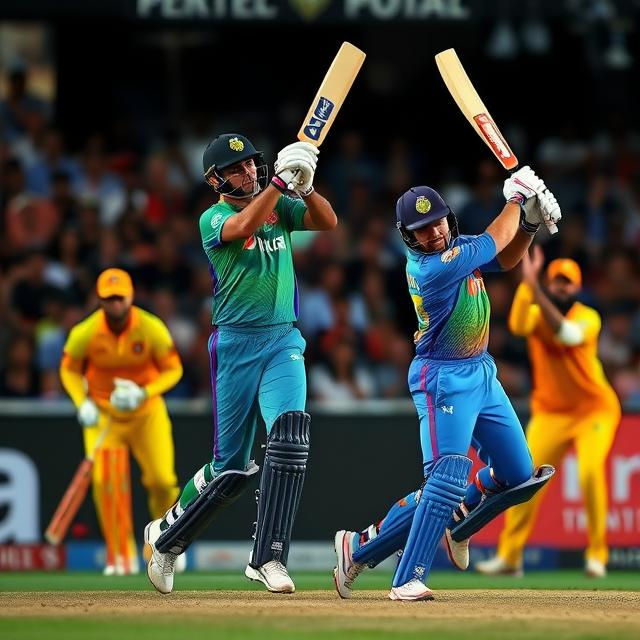A History of Pakistan Cricket: Peter Oborne’s Insightful Account
Unveiling Pakistan Cricket’s Journey: A Review of Peter Oborne’s Book
Peter Oborne’s exploration into Pakistan cricket, a nation with a passionate and often tumultuous relationship with the sport, promises a fascinating narrative. This insightful book delves into the triumphs and tribulations, the controversies and celebrations, that have shaped Pakistan’s cricket story. From the early days of struggle to the modern era, Oborne’s work explores the cultural, social, and political context surrounding Pakistan’s cricketing exploits.

Early Struggles and Emerging Talent: Laying the Foundation
Oborne’s book likely traces Pakistan’s early cricketing years, highlighting the challenges and obstacles the nation faced in establishing itself on the international stage. This includes discussing the crucial players and teams, and the early matches that ignited a cricketing passion in a nation. Were there initial struggles with infrastructure, training facilities, or access to international competition? These early challenges, and the figures who overcame them, are key to understanding Pakistan’s current position in global cricket.
How did the political and social climate of Pakistan affect the development of cricket during this period? Oborne’s work will undoubtedly shed light on the interplay between these factors and the evolution of the game.
The Rise of Legends and the Golden Era: A Time of Triumphs
The book likely focuses on the pivotal moments of Pakistan’s cricketing history. A detailed examination of their notable successes—whether it’s their victories against traditional powerhouses or their groundbreaking performances—will certainly be of interest. Focusing on significant figures like Imran Khan, Wasim Akram, and others, Oborne would be expected to explore their individual contributions to the team’s success and their lasting legacies.
The author’s perspective on the “golden era” will undoubtedly be insightful. Oborne’s work will explore the socio-cultural factors that contributed to Pakistan’s impressive run in international cricket, which were likely intertwined with the nationalistic fervor and media exposure.

Controversies and Challenges: Navigating the Complexities
No exploration of Pakistan cricket would be complete without examining the controversies that have plagued the sport. Oborne’s book is likely to analyze match-fixing scandals, allegations of corruption, and other controversies that have impacted the team’s reputation and performances. By examining these issues, Oborne attempts to provide a comprehensive overview of the challenges and obstacles that Pakistan cricket has faced.
Oborne’s assessment of the impact of these controversies on the team’s image and the overall perception of cricket in Pakistan is an important aspect of the book that should be analyzed. How have these events shaped the narrative surrounding Pakistan cricket both domestically and internationally?
Modern Pakistan Cricket: Adapting and Thriving?
Moving into the contemporary era, the author likely analyzes the evolution of Pakistan cricket. A key question is how Pakistan’s cricket has adapted and changed to meet modern challenges. Factors such as changes in playing styles, evolving cricketing strategies, and the influence of emerging players are crucial areas of focus. This part will likely touch upon the current status of the game, including the performance of the national team in recent years, and whether this generation can build on the legacy of past greats.
Oborne’s work might evaluate the current infrastructure, coaching, and support systems that are in place to nurture young talent and maintain Pakistan’s competitiveness in international cricket. Are there any significant changes and developments in Pakistan’s cricketing support structure that can help sustain a strong, competitive team in the future? This discussion is likely woven into the overall narrative.
The Cultural Significance of Cricket in Pakistan: A Deep Dive
Understanding Pakistan cricket is inextricably linked to the nation’s cultural landscape. Oborne’s book will likely delve into the profound impact cricket has had on Pakistani society. The book potentially examines cricket’s role in social gatherings, cultural celebrations, and even national identity. This part will analyze the significance of cricket in fostering a sense of national pride and unity among the Pakistani people, and how it has influenced nationalistic sentiments.
How has the media coverage of Pakistan cricket impacted public perception and social views? This aspect potentially contributes greatly to the overall picture painted in the book. This may involve discussions on how Pakistani society views and experiences the sport, including fan culture, and local media reactions to successes or disappointments.
A Critical Assessment of Oborne’s Approach
Peter Oborne’s approach, and his perspective on the sport and nation, is likely to be a crucial element of this book review. Is it balanced and fair? Are there any discernible biases that may influence his analysis? The author’s approach to presenting the various perspectives within Pakistani cricket will be essential to understanding the final product. This involves evaluating the author’s selection and use of sources, and his overall narrative arc.
A reviewer might also compare and contrast Oborne’s account with other existing histories of Pakistan cricket. Such comparative analysis will offer a more nuanced understanding of the subject. What strengths and weaknesses can be found in Oborne’s methodology compared to others who have written about this topic?
Conclusion: A Comprehensive Look at Pakistan Cricket
Ultimately, Peter Oborne’s “History of Pakistan Cricket” promises a profound and thorough exploration of the nation’s cricketing journey. The book’s potential to offer a comprehensive and nuanced understanding of the complexities and contradictions surrounding Pakistani cricket will undoubtedly make it a valuable read for fans and scholars alike. This book is likely to stimulate important conversations and provide a deeper understanding of the sport’s role in the cultural and political landscape of Pakistan.
Note: This article is a hypothetical review. The actual content and perspective of Peter Oborne’s book on the subject matter are not known and are not based on any specific published work.